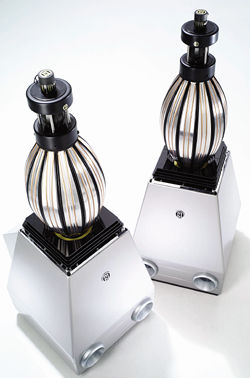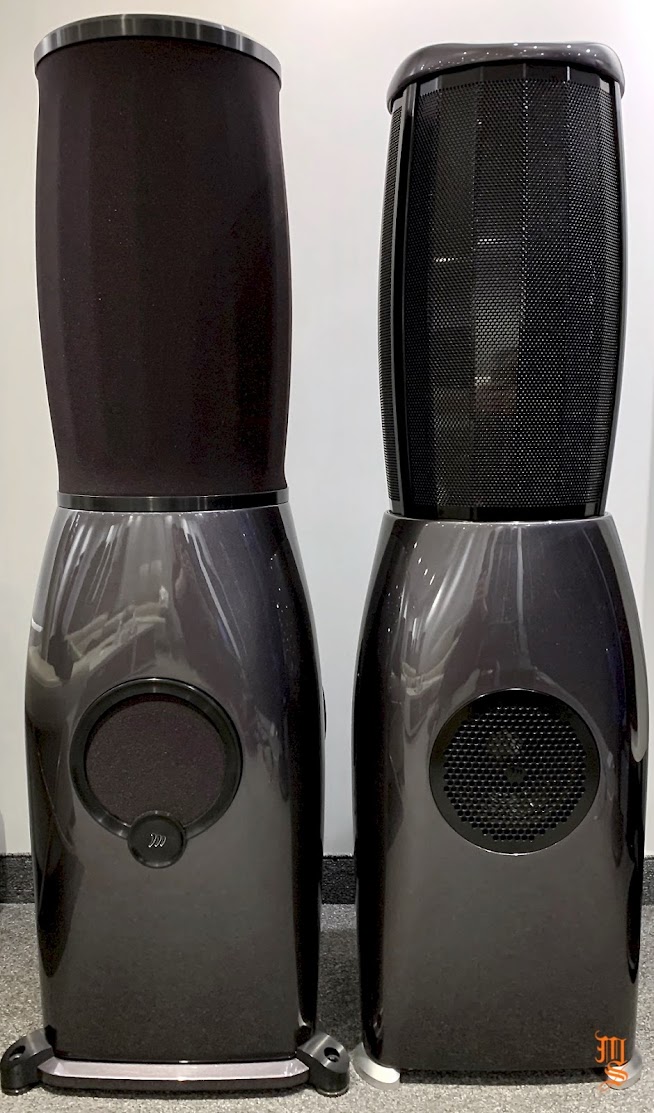omni speakers have higher sound power in high frequencies than forward firing speakers. Omnis can radiate directional high frequencies with as much output as omnidirectional frequencies like 100hz in a room, as a result an omni speaker with flat on-axis response can theoretically form flat response reflections. That is not the case for conventional speakers.
I agree with this part.
An omni speaker with flat on-axis response sounds significantly brighter than a forward firing speaker.
True, but "flat on-axis" is not the only option available for "voicing" an omni speaker.
Higher sound power of omni speakers can be balanced with rolling off the direct sound with same magnitude and slope where sound power of forward firing speakers start rolling off however direct sound is perceptually dominant in human perception. If direct sound is recessed, reflections can't make it sound balanced. (or if the direct sound is bright, reflections with recessed treble tonality can't make it sound right) Basically there is no way to make recordings sound balanced on omni speakers with recordings that was mixed and mastered on forward firing speakers. Especially treble is doomed to sound wrong on omni speakers.
It sounds to me like you're making the assumption that "flat direct sound, rolled-off-highs in the reflected sound" is the most correct way to deliver a recording to listeners, perhaps because that is preferred in a conventional loudspeaker. Imo it is a "best compromise". Let me explain:
Exactly as you say, "if the direct sound is bright, reflections with recessed treble tonality can't make it sound right". You have just described the situation which arises with conventional loudspeakers! Those most highly rated have the best combinations of "flat direct sound which would be bright all by itself" and "rolled-off reflections which would be dull all by themselves". The best combinations of the bright spectral balance of the flat direct sound and the duller spectral balance of the reflections ends up in a "happy middle ground" voicing which looks like the Harman in-room preference curve (I'm thinking of the thick dotted line but the others are also experimentally-established preference curves):
Omni loudspeakers result in LESS spectral discrepancy between the direct and reflected sound. So if an omni's response (naturally both on and off axis) is conceptually aligned with Harman's in-room preference curve (though probably not identical to it), then its perceived voicing will fall into that "happy middle ground" between bright and dull, BUT with the arguable advantage of reduced spectral discrepancy between the direct and reflected sound.
Here is why I think reducing the spectral discrepancy between the direct and reflected sound is beneficial:
Harman's research shows consistent preference for conventional speakers which minimize the spectral discrepancy between the direct and reflected sound, this characteristic showing up as a really good spin-o-rama. So doing an even better job in that area makes intuitive sense, assuming there are no overriding downsides.
I'm NOT saying that good omnis are across-the-board better than good conventional speakers; they are certainly more challenging to integrate into a room well, and I do not think their inherently low direct-to-reverberant sound ratio is ideal. I have not owned omnis for forty years, nor do I build or sell them. But imo under good conditions (another topic for another day!) they can do some things really well, with conveying natural-sounding timbre being one of them.
Last edited:


